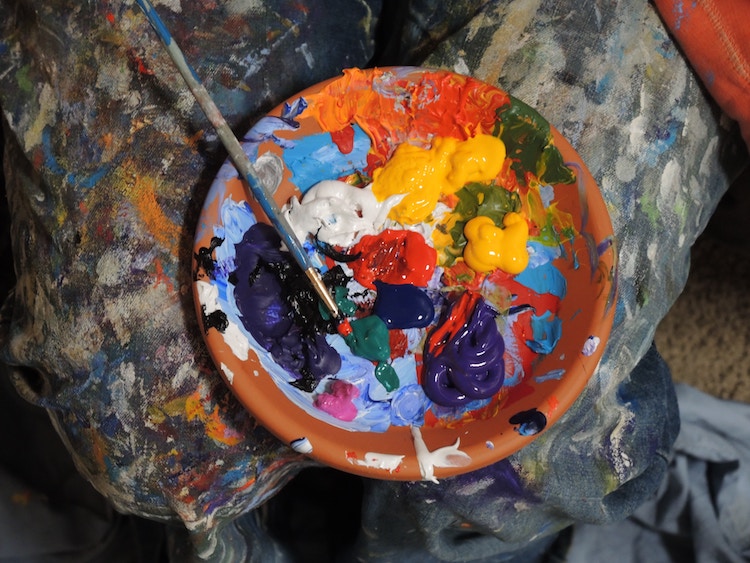Now that you know the basics, it’s time to try color mixing.
To begin mixing colors, you’ll want to have a paint palette, because it’s important to have a place to combine hues where you can perfect them—and they won’t interfere with your work. If you’re mixing watercolor paints, you can blend the colors with your paint brush. But if you’re using acrylics or oils, you’ll want to invest in a palette knife; these types of paints get very viscous and a palette knife will allow you to evenly mix the pigments.
Need a guide to finding the best paint? Check out our picks for best acrylic paint, oil paint, and watercolor sets.

Photo: Mike Petrucci
Mix your colors like a pro with these tips.
- Add a dark pigment to light colors. It’s easier to darken a color than it is to lighten it. If you were trying to make pink, for instance, try adding red to your white paint. You’ll find that you use considerably less pigment that way.
- When darkening a color, avoid using black. Busting out black might seem like the obvious choice when trying to darken a hue, but it can make your color look flat and muddy. To create a more nuanced color, try adding ultramarine blue or burnt umber instead.
- Skip using black altogether. Use these two colors instead. Speaking of ultramarine blue and burnt umber, mix them in equal parts to make a rich, beautiful black. When mixed with white, it makes a great gray.
- To make a color look “cool,” add blue. To make it appear warmer, try incorporating yellows or reds.
- Wanna know how to mix brown? It’s easy; just combine all of the primary colors!
- Play around with color mixing without using any paint—thanks to this website. Try Colors is a great resource that will allow you to combine a myriad of colors and it’ll even show you how to mix that particular hue.
- Mix your colors a little lighter than you want them to dry. Paint colors typically dry darker than when you apply them to your canvas. By mixing them a couple of shades lighter, you’ll ensure that you’re actually getting the colors you want.
When you’ve mixed a color you really like, add it to your color chart.
There’s nothing more frustrating than mixing a color and then forgetting how you made it! Record the colors you really like by drawing a grid on canvas or paper and labeling the X and Y axes with different paint colors.
When you mix a new hue, label one on the X and one on the Y-axis. Then paint a swatch in the grid where the two meet. Next time you want to mix that particular hue, you can see what it took to create it.
Here are a few examples from Gudlaug Thorleifsdottir.
Now that you’re ready to mix colors, here are 50+ painting ideas that’ll inspire you to pick up your brush right now!
This post may contain affiliate links. If you make a purchase, My Modern Met may earn an affiliate commission. Please read our disclosure for more info.
Related Articles:
How Artists Have Kept Still Life Painting Alive Over Thousands of Years
50+ Painting Ideas That Will Inspire You to Pick Up a Brush Right Now
Monumental Masterpieces: 8 of Art History’s Most Famous Large-Scale Paintings
